
东亚文化交涉学刊(英文)(Journal of Cultural Interaction in East Asia)(国际刊号) 知网目次
- AMI入库
- 主管单位:
- 主办单位:
北京外国语大学
- 国际刊号:
2747-7576
- 国内刊号:
- 学科分类:
- 字数:
-
- 有无基金:
- 周期:
国际号刊-半年刊
- 特殊属性:
- 电话:
- 邮箱:
- 复合因子:
0
- 综合因子:
0
- 收录:
知网目次
- 级别:
AMI入库
期刊简介
《东亚文化交涉学刊》期刊已被查看: 次
更新频次
单位占比
一作占比
投稿指南
1、该刊只有国际刊号!
2、投稿方式:在线投稿。
3、官网网址:
https://www.degruyter.com/journal/key/jciea/html
4、投稿系统:https://mc.manuscriptcentral.com/jciea
5、北京外国语大学学术期刊网:
https://www.bfsujournals.com/c/2021-09-14/506193.shtml
6、期刊刊期:半年刊,每年6月、12月出版。
2023年3月23日星期四
《东亚文化交涉学刊》期刊介绍
(Journal of Cultural Interaction in East Asia)
本刊致力于在全球史视野下对东亚范围内的东西文化交涉以及东亚各地域间的文化交涉进行研究,针对东亚内部文化的形成、接触、冲突、变迁、融合等现象进行动态的把握,并对其结构性整合进行探索与分析。本刊力求突破研究中惯常存在的国家、文明或固定空间的研究曲径视野,为东亚文化交涉提供更为宽阔的空间。
本刊为东亚文化交涉学会(Society of Cultural Interaction in East Asia)的会刊,已有近十二年的出版历史,获得众多业内学者的认同。为促进学术交流,《东亚文化交涉学刊》现已采用开放获取(OA)模式,每年出版两期,分别在6月以及12月上线,欢迎各方学者投稿。
投稿指南Contribution_Guidelines_JCIEA
【官网信息】
CONTRIBUTION GUIDELINES
Categories of Papers
This Journal of Cultural Interaction in East Asia accepts three categories of papers, articles, book reviews and institution’s information, in the field of the history of cultural interaction in East Asia.
Length of papers JEICA publishes original, peer-reviewed scholarly articles, which should be less than 8,000 words in length (excluding the abstract and list of references). Book reviews should be not more than 3,500 words, and institution’s information, which contains not more than 2,500 words, may be considered suitable.
Papers should demonstrate:
awareness of the literature available on the topic
critical analysis of the facts, opinions and procedures relevant to the topic
appropriate research methodology and design
a balanced discussion of the evidence and its implications
cogency of argument
a clear and coherent structure.
Papers should be preceded by an unstructured abstract of approximately 150 - 200 words, and 3-5 keywords.
Language
The language of publication is English. Papers submitted by authors whose first language is not English may be required to have their manuscript copy-edited by a proficient English copy-editor and are subject, as an integral part of the editorial process, to any minor grammatical and linguistic corrections that are necessary to meet the traditional high standards of academic writing of the journal.
Reference
1. In general, JCIEA follows the APA Style, which authors can find it’s guideline and example following this link: https://apastyle.apa.org/style-grammar-guidelines/references/examples
2. Notes (for additional discussion) should be printed at the bottom of a page as footnotes and should not be used to give references. References should be cited in the text, each one with name of the author followed by the publication date, such as:
In his 1935 study Guo Moruo describes how . . . As Guo Moruo (1935) mentions, . . . . . . during the Qing dynasty (Guo 1935).
Use “et al.” for more than three authors. The letters a, b, c, . . . should be used for different works by the same author in the same year. All text references should be listed alphabetically after the notes. Please list works in the original language. An English translation may be given for titles of books and papers in foreign languages. It is not necessary to translate journal titles or publishers’ names. Examples:
Yu, Ying-shih. 1967. Trade and Expansion in Han China: A Study in the Structure of Sino-Barbarian Economic Relations. Berkeley and Los Angeles: University of California Press. [Author’s name follows what appears in the publication even if the romanization is not pinyin.]
Tao, De-min. 1991. “Traditional Chinese Social Ethics in Japan, 1721–1943,” The Gest Library Journal 4: 2. 68–84. Watsuji Tetsurō 和辻哲郎. 1935. Fūdo: Ningengakuteki kōsatsu 風土 : 人間学的考察 (Local Cultures and Customs: Anthropological Observations). Tokyo: Iwanami Shoten.
Guo Moruo 郭沫若. 1931. Zhongguo gudai shehui yanjiu 中國古代社會硏究 (Research on Premodern Chinese Society). Shanghai: Shanghai Xiandai Shuju.
3. Use the Latin script primarily. Chinese and Japanese scripts can be added after Latin transcriptions of names, technical terms and works, especially in the bibliography. Please do this only when it’s helpful, it’s not necessary to add East Asian scripts for every Chinese or Japanese name or term.
For Chinese, please use pinyin. An exception is made for Sun Yat-sen (Sun Zhongshan), Chiang Kai-shek (Jiang Jieshi), Peking University, Tsinghua University, and Taiwan names familiar in the West (e.g., Ang Lee [Li An], Taipei). For ambiguous cases, give the pinyin, followed by the common appellation: Song Jiashu
(Charlie Soong), Shantou (Swatow), Guangzhou (Canton). Usually it is not necessary to give Chinese characters for personal names, since these are easy to look up.
For Japanese, please use the Hepburn system as modified by Kenkyūsha (e.g., shinbun, not shimbun). Indicate long vowels with a macron, and give names in their Japanese order, with family name first.
For Korean, please use the the McCune-Reischauer system. Again, the family name precedes the given name. Since the romanization indicates the Hangul, it is not necessary to indicate the Hangul of Korean terms. The Chinese characters for a Korean term may be added if it’s helpful. Examples:
The Tale of Genji (Genji monogatari 源氏物語) [a translated work] Zhangwu zhi (長物志 Treatise on superfluous things) [an untranslated work] collected statutes with model cases (huidian zeli 會典則例) turtle ships (kŏbuksŏn 龜背船)
4. Tables and figures (photographs, maps, and other illustrations) may be used at the author’s expense. Submit figures captions on a page or pages separate from the body of article. Special plate making is also available at the author’s expense.
《东亚文化交涉学刊》同类文化期刊
-

墨子学刊(集刊)(不收版面费审稿费)
集刊-半年刊影响因子0
-
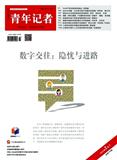
青年记者
CACJ-权威,AMI扩,武B+
CN中文-月刊影响因子0.581
-
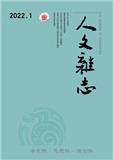
人文杂志(不收版面费审稿费)
C刊,北核,AMI核心,武A,国社科-优秀
CN中文-月刊影响因子1.941
-
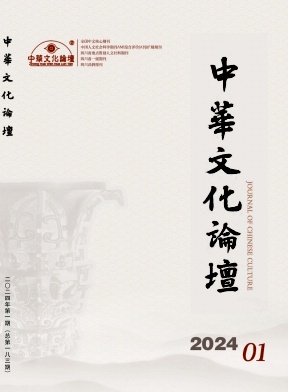
中华文化论坛(不收版面费审稿费)
北核,科核,AMI扩,武B+
CN中文-双月刊影响因子0.439
-
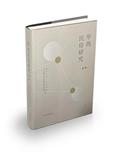
华西民俗研究(集刊)(不收版面费审稿费)
集刊-半年刊影响因子0
-
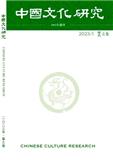
中国文化研究(不收版面费审稿费|有稿费)
北核,C扩,科核,AMI核心,武A-
CN中文-季刊影响因子0.597
-
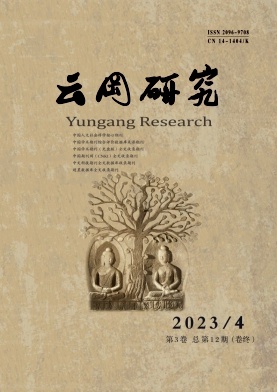
云冈研究
AMI核心
CN中文-季刊影响因子0
-
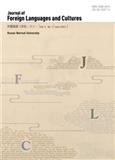
外国语言与文化(英文)(Journal of Foreign Languages and Cultures)
AMI入库,省级普刊
CN外文-半年刊影响因子0
常见问题
-
东亚文化交涉学刊杂志社官网、联系方式是什么?
东亚文化交涉学刊杂志社官网:https://www.degruyter.com/journal/key/jciea/html
投稿网址:https://mc.manuscriptcentral.com/jciea -
东亚文化交涉学刊杂志是核心期刊么?
东亚文化交涉学刊是核心期刊,级别是:AMI入库, 是:文化分类下的知网目次收录的期刊。
-
请问你们是东亚文化交涉学刊杂志社吗?
我们不是《东亚文化交涉学刊》杂志社。本站主要从事期刊信息展示与期刊推荐,不是任何杂志官网,直投稿件请联系杂志社。本站仅提供免费的学术指导、论文辅导、期刊投稿信息整理收集服务。
-
你们指导服务后可以保证文章被发表吗?
期刊发表的成功与否,主要取决于文章内容的质量。编辑老师会根据研究领域、创新性等多因素进行考量。我们会帮助您理解期刊的发表要求,助力提升发表几率,从而增加发表的机会。
-
晋级论文能否在报纸上发表?
在学术界,论文的发表往往被视为研究者职业发展的重要一环。晋级论文,即为了获得更高职称或学术地位而撰写的学术论文,通常需在专业期刊上发表。然而,许多人可能会问
